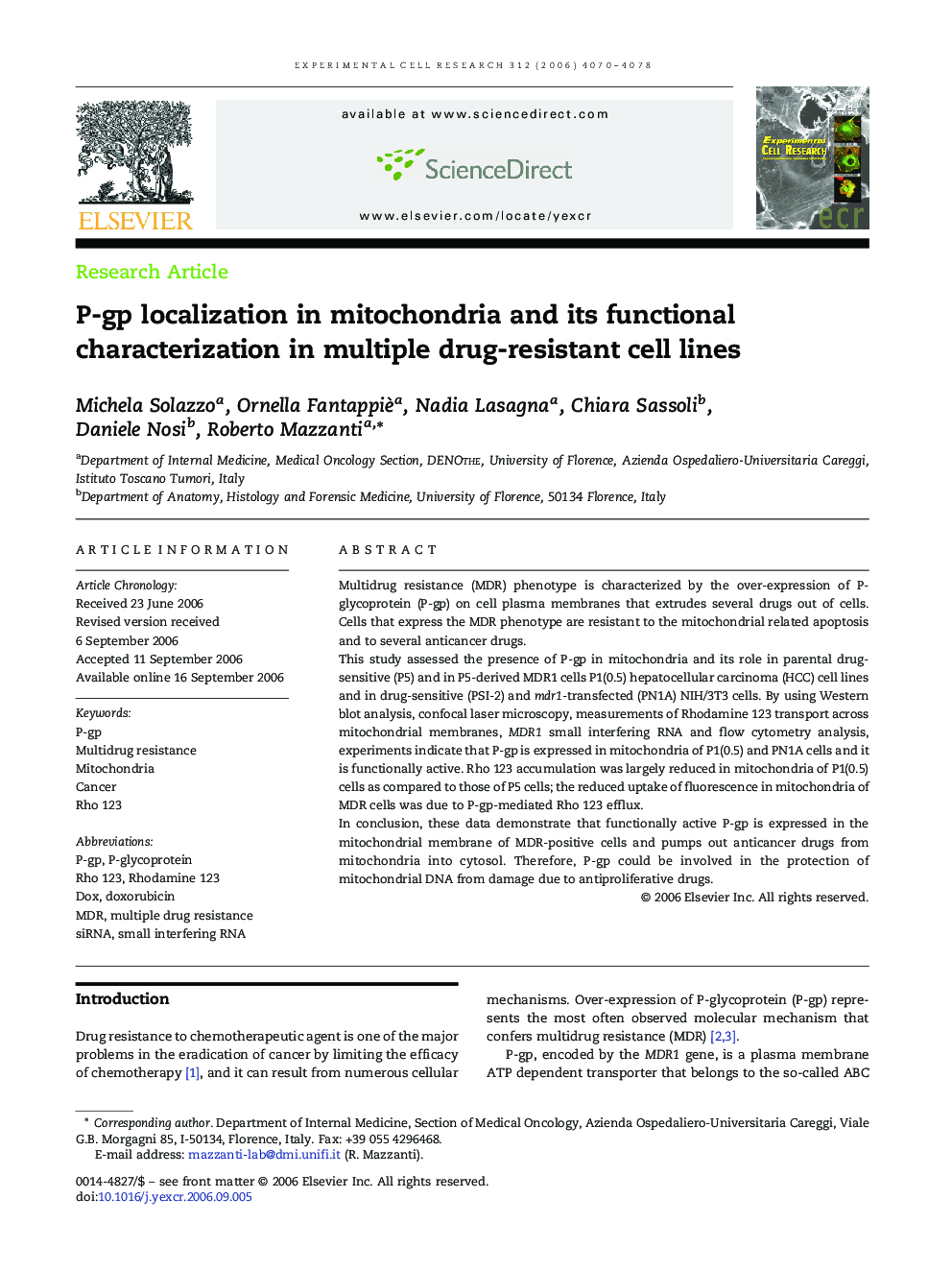| Article ID | Journal | Published Year | Pages | File Type |
|---|---|---|---|---|
| 2132708 | Experimental Cell Research | 2006 | 9 Pages |
Multidrug resistance (MDR) phenotype is characterized by the over-expression of P-glycoprotein (P-gp) on cell plasma membranes that extrudes several drugs out of cells. Cells that express the MDR phenotype are resistant to the mitochondrial related apoptosis and to several anticancer drugs.This study assessed the presence of P-gp in mitochondria and its role in parental drug-sensitive (P5) and in P5-derived MDR1 cells P1(0.5) hepatocellular carcinoma (HCC) cell lines and in drug-sensitive (PSI-2) and mdr1-transfected (PN1A) NIH/3T3 cells. By using Western blot analysis, confocal laser microscopy, measurements of Rhodamine 123 transport across mitochondrial membranes, MDR1 small interfering RNA and flow cytometry analysis, experiments indicate that P-gp is expressed in mitochondria of P1(0.5) and PN1A cells and it is functionally active. Rho 123 accumulation was largely reduced in mitochondria of P1(0.5) cells as compared to those of P5 cells; the reduced uptake of fluorescence in mitochondria of MDR cells was due to P-gp-mediated Rho 123 efflux.In conclusion, these data demonstrate that functionally active P-gp is expressed in the mitochondrial membrane of MDR-positive cells and pumps out anticancer drugs from mitochondria into cytosol. Therefore, P-gp could be involved in the protection of mitochondrial DNA from damage due to antiproliferative drugs.
